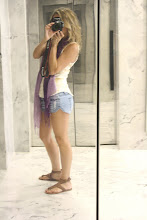Picasso was the incandescent prodigy. His career as a serious artist began with a masterpiece, “Evocation: The Burial of Casagemas,” produced at age twenty. In short order, he painted many of the greatest works of his career—including “Les Demoiselles d’Avignon,” at the age of twenty-six. Picasso fit our usual ideas about genius perfectly.
Cézanne didn’t. If you go to the Cézanne room at the Musée d’Orsay, in Paris—the finest collection of Cézannes in the world—the array of masterpieces you’ll find along the back wall were all painted at the end of his career. Galenson did a simple economic analysis, tabulating the prices paid at auction for paintings by Picasso and Cézanne with the ages at which they created those works. A painting done by Picasso in his mid-twenties was worth, he found, an average of four times as much as a painting done in his sixties. For Cézanne, the opposite was true. The paintings he created in his mid-sixties were valued fifteen times as highly as the paintings he created as a young man. The freshness, exuberance, and energy of youth did little for Cézanne. He was a late bloomer—and for some reason in our accounting of genius and creativity we have forgotten to make sense of the Cézannes of the world.
He goes on to say, that many artists are simply late bloomers...
On the road to great achievement, the late bloomer will resemble a failure: while the late bloomer is revising and despairing and changing course and slashing canvases to ribbons after months or years, what he or she produces will look like the kind of thing produced by the artist who will never bloom at all. Prodigies are easy. They advertise their genius from the get-go. Late bloomers are hard. They require forbearance and blind faith. (Let’s just be thankful that Cézanne didn’t have a guidance counsellor in high school who looked at his primitive sketches and told him to try accounting.) Whenever we find a late bloomer, we can’t but wonder how many others like him or her we have thwarted because we prematurely judged their talents. But we also have to accept that there’s nothing we can do about it. How can we ever know which of the failures will end up blooming?








